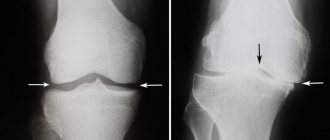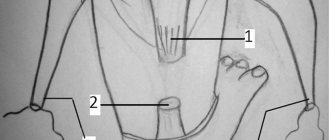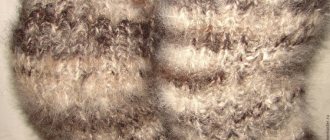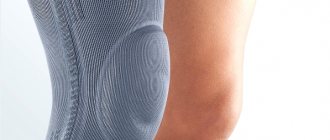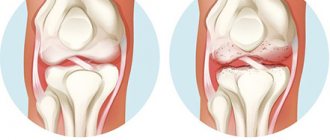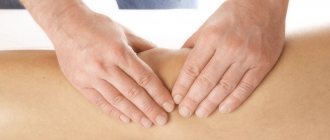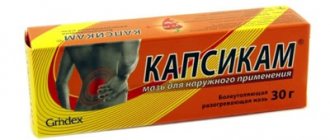What it is
The ankle joint performs the most important supporting function in the human body, and its damage leads to the inability of a person to move normally. In order for the joint to quickly recover, specialists prescribe special clamps to be worn during the treatment period, which relieve the load on it. One such orthopedic product is an ankle splint.
A splint is an orthopedic product that fixes the joint in a stationary state. It is used in cases where it is necessary to limit active and passive movements in the joint and fix the limb in a physiologically correct position. An ankle brace helps to significantly shorten the recovery period after fractures and fracture-dislocations, as well as prevent secondary damage to the joint.
Ankle splints are made of plastic or leather, lacing or straps made of thick fabric are used for fixation, and the inside of the product is covered with a layer of natural fabric to avoid an allergic reaction. Thanks to the fixing straps, the product is adjusted to the leg, depending on the doctor’s prescription.
Kinds
Models can be standard or custom-made. The first ones can be purchased at a regular orthopedic store. Products are distinguished depending on what material they are made of, so the retainer can be leather or plastic.
Depending on the functional features, the following types are distinguished:
- non-stress braces are used during sleep or for bedridden patients; walking in them is prohibited
No-load
- functional restraints are used during movement;
Functional tutor
- Foot support splints are used for foot drop.
Stop holder
Models can fix one or more joints; there are also models that prevent movement not only in the ankle, but in the entire limb; they are used for severe injuries and pathologies of the joint.
Application of bandages
Minor ankle injuries in children do not require too rigid fixation. In this case, an elastic bandage may be prescribed. Bandages for easy fixation are made of special jersey and neoprene. Neoprene elements retain heat, accelerate blood flow, and warm the damaged area. But such an ankle brace can only be used by those who are not allergic to synthetics. Often children's sensitive skin does not like such materials.
Some types of bandages are made as an elastic bandage with Velcro ties, some have a more complex design. There are models with laces and silicone inserts that are designed to enhance compression. This ankle brace is recommended for young and experienced athletes to minimize stress.
Indications
Wearing a rigid retainer should only be carried out as directed by a doctor; using such a product without a specialist’s prescription can lead to serious complications.
Wearing a splint is prescribed in the following cases:
- severe injuries of the ankle joint, ankle fractures, fracture dislocations, ligament ruptures;
- neurological diseases, for example, cerebral palsy;
- spinal cord injury;
- shortening of the limb;
- postoperative period;
- paraplegia;
- hallux valgus;
- clubfoot;
- deforming arthrosis, contracture, and other articular pathologies in the acute stage.
In case of inflammatory and degenerative pathologies of the ankle joint, a hard brace can be replaced with a medium-hard model or an articulated orthosis, it all depends on the severity of the patient’s condition.
Splints for children
An ankle splint for a child is different from one for an adult. Children's models are made taking into account the structural features of the baby's legs. Such clamps must be selected correctly; they should not compress the limb, otherwise deformation, muscle atrophy, and circulatory disorders in the lower extremities with subsequent complications may occur.
For children
For children, rigid restraints are usually prescribed for pathologies such as cerebral palsy, rickets, as well as for various pathologies of the development of the lower extremities. A correctly selected splint will help fix the leg in a physiological position and achieve normal bone growth without deformation.
Functions of lower limb braces
With the help of a splint, swelling is reduced, blood supply to the sore limb is improved, and tissue restoration is accelerated.
The tutor performs the following functions:
- Provides complete immobilization of the leg joints during therapy and rehabilitation after surgery;
- Reduces pain;
- Creates peace for the affected limb;
- It is used as a preventive measure for a number of diseases (osteoporosis, cerebral palsy);
- Used to correct deformed joints;
- Useful when changing a splint or splint.
How to choose an ankle splint
In order for the fixative to be useful and help get rid of the pathology faster, you need to choose it correctly. First of all, it is recommended to consult an orthopedist to make sure that a brace is necessary in a particular case. It is quite possible that the patient will need to have a cast applied, or an orthosis can be used; only a doctor can give an exact answer after examining the leg.
Leather splint
You can purchase a brace at a regular orthopedic store; to do this, you need to know which model you need and measure your foot size with a centimeter tape. For ankle injuries, a functional brace is indicated to allow movement of the metatarsal bones. If the doctor considers it necessary to completely fix the joint and the entire foot, then wearing a non-weight-bearing model will be prescribed.
Attention! If the splint is too large, it will not be able to properly fix the joint, and the treatment will be ineffective. A small retainer will cause the appearance of calluses and interfere with blood circulation in the legs.
To choose the correct product size, you need to measure your foot length and ankle circumference. When choosing a product in a store, you must try it on, especially if the measurements obtained do not correspond to the data on the packaging
Popular manufacturers and prices
Let's look at several popular models with photos and their cost:
- The Orlett HAS-301 model is used for paresis and after fractures, the cost is 11,000 rubles.
- The Fosta fs2202 model is used for inflammatory joint pathologies and during the rehabilitation period after fractures, cost from 7,000 rubles.
- The Ogonyok THO-20 model is intended for the treatment of cerebral palsy, as well as ankle injuries, the cost is 2,800 rubles.
The cost of the model depends on the manufacturer, the store’s pricing policy and the complexity of the tutor. Thus, Russian models are cheaper than German and American ones, but at the same time perform their function perfectly. Expensive models are made from the highest quality materials; they will last longer, but this is not always relevant for the patient if the course of treatment is only 2 weeks.
Manufacturing options
There are several options for making splints. There are ready-made products made according to standard sizes; you can also order an individual device that will be adjusted to specific measurements.
The materials from which these orthopedic devices are made also differ. You can order a splint made of low-temperature or regular plastic, as well as genuine leather. An orthopedic surgeon can advise you on the most suitable option. The device is made exclusively from a plaster cast.
At the medical enterprise "Prometr"
a splint will be made for you with the participation of a professional orthopedist. We are engaged in the production of orthoses and splints both in standard sizes and according to individual measurements. If you want to place an order, our doctor will come to your home free of charge, take measurements and advise on specific treatment. The tutorial itself will be ready as soon as possible.
Return to list
How to use
It is necessary to put on a rigid retainer taking into account the following recommendations:
- before using the product, you need to take a warm bath and massage around the affected joint;
- You need to wear a cotton sock under the splint.
While using the splint, you should not apply any creams or lotions to the skin; only after removing the product, it is recommended to wipe the reddened areas of the skin with formic alcohol, first rinse the leg under water and dry it with a towel.
If the disease is mild and movement in the ankle joint is possible, put on the product while standing. It is necessary to work with the foot and knee joint, gradually limiting movements and fastening the brace. If pain appears in the ankle area, you need to loosen the upper part of the product and work with your knee, and then fix the leg again. In case of severe pathologies, the model is put on, working only with the knee, the ankle must remain motionless.
If there is a feeling of numbness, tingling, pain in the leg, and the tips of the fingers turn blue, then the splint is fastened too tightly, it needs to be loosened, otherwise the blood circulation in the leg will be impaired.
The duration of wearing the splint depends on the severity of the disease, on average it is 10-14 days, and during the day it must be regularly removed and massaged, and exercise therapy exercises prescribed by the doctor must be performed. You can keep your leg in a splint for no more than 8 hours, this applies to the period of night sleep.
Popular manufacturing companies
You should not buy a product that is too cheap from an unknown manufacturer; preference should be given to a well-known, trusted company that cares about its reputation and the quality of its products. The products of such companies have certificates of conformity and a registration certificate from the Ministry of Health.
The Orlett brand is one of the most recognizable. This German company is a developer and manufacturer of orthoses made from modern high-quality materials. Their products meet the requirements of both the professional medical community and patients. The KS-601 splint presented in the line of orthoses has the following advantages:
- metal stiffeners and non-stretchable cuffs ensure complete fixation of the knee joint;
- 5 modeled tires are provided for individual adjustment to the leg;
- 6 back-to-back straps (small sizes have 4 straps) with textile Velcro fastener provide additional support;
- The cuffs are made of soft, pleasant to the touch material, suitable for sensitive skin prone to allergic reactions.
Trives is a network of orthopedic salons. The company from St. Petersburg has been producing and selling medical products under its own brand for 20 years.
The T-8506 splint, designed to provide complete fixation and lateral stabilization of the knee joint, consists of the following elements:
- 5 extended metal tires – 3 at the rear, 2 at the side;
- 3 panels individually adjusted to the structure of the limb;
- belt-tightening systems consisting of 6 tapes – 60 cm, 4 – 50 cm, equipped with Velcro fasteners;
- The inner layer is made of terry fabric, suitable for long-term wear.
How to care
It is necessary to wipe the splint every day with a clean cloth. It is recommended to wash it by hand, with laundry soap or liquid detergent. If severe dirt appears, you need to rub the stain with soap and leave for 15 minutes, then rinse well with water. Do not use stain removers, bleaches, or washing powders.
Attention! When cleaning the product, you need to make sure that there is no allergic reaction to the detergent.
The product must be dried in a horizontal position away from sunlight and heat sources. Do not wash or wring out the splint in a washing machine, as this may lead to deformation and breakage.

